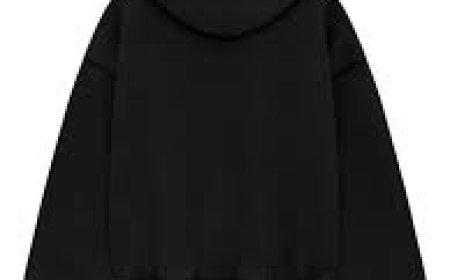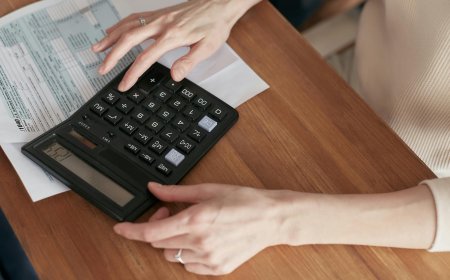Tree Pruning: Introduction to Tree Pruning
Tree pruning isn’t just a task—it’s an art. When done right, it leads to healthier trees, safer yards, and more beautiful landscapes. Whether you're doing it yourself or hiring a pro, pruning is one of the best things you can do for your trees. Start small, learn the right techniques, and your trees will reward you for years to come.

Tree pruning is the practice of selectively removing certain parts of a treelike branches, buds, or rootsto improve the tree's structure, health, and appearance. Its like giving your tree a haircutbut with a lot more benefits.
Why Tree Pruning Is Important
Tree Pruning helps trees live longer, grow stronger, and look better. It also helps prevent accidents from falling limbs and can even increase fruit production. Think of it as preventive medicine for your greenery.
? Benefits of Tree Pruning
Healthier Trees
By removing dead, diseased, or damaged branches, pruning stops disease from spreading and encourages new growth. Its like cutting out the rot so the rest can thrive.
Safety Around Property and People
Unpruned trees can grow into power lines, block visibility, or drop heavy limbs. Pruning minimizes the risk of injuries or property damagekeeping your yard safe and sound.
Improved Aesthetic and Landscape Value
A well-pruned tree just looks better. It adds curb appeal, symmetry, and charm to your yard or garden.
Boosted Fruit and Flower Production
Pruning encourages healthy fruiting wood and better air circulation. That means bigger blooms and tastier fruityum!
? When to Prune Trees
Best Time of Year
Late winter or early spring is usually the best time. The tree is dormant, meaning less stress and faster healing.
Seasonal Considerations
Some flowering trees should be pruned right after blooming. Others, like fruit trees, do best with early spring pruning.
Signs Your Tree Needs Pruning
Look for:
-
Dead or broken branches
-
Crowded or crossing limbs
-
Rapid upward shoots (suckers)
-
Obstructed pathways or views
?? Types of Tree Pruning
Crown Cleaning
Removing dead, diseased, or broken branches from the top layer (crown) of the tree.
Crown Thinning
Selective removal to allow light and air through the crown. Great for reducing wind resistance.
Crown Raising
Lifting the canopy by removing lower limbsuseful for clearance over walkways or driveways.
Crown Reduction
Reducing the height or spread of a tree without compromising its structure. Ideal for large trees in tight spaces.
Deadwooding
Removing limbs that are completely deadthese are the ones that pose the most danger.
?? Tree Pruning Tools and Equipment
Basic Tools Every Gardener Needs
-
Hand pruners
-
Loppers
-
Pruning saws
Safety Gear for Pruning
-
Gloves
-
Eye protection
-
Helmet (for tall trees)
Power Tools vs. Manual Tools
Chainsaws and pole pruners are great for big jobs, but always handle with care (or let a pro do it).
? Step-by-Step Guide to Pruning a Tree
Assessing the Tree
Start by walking around the tree and identifying what needs to godead wood, rubbing branches, or overcrowding.
Planning Your Cuts
Visualize what the tree will look like after each cut. Dont just snip blindly.
Making the Cuts Correctly
Use the three-cut method for large limbs:
-
First cut: 12 inches out from the trunk, undercut a third of the way.
-
Second cut: From the top, an inch further out.
-
Final cut: At the branch collar, close to the trunk.
Post-Pruning Care
Water the tree, clean up the debris, and avoid fertilizing immediately after major pruning.
? Tree Pruning Mistakes to Avoid
Over-Pruning
Removing too much can shock or even kill the tree. Stick to the 25% rule: never remove more than 25% of the canopy in a year.
Wrong Timing
Pruning during peak growth or freezing weather can lead to disease or dieback.
Topping Trees
Cutting the top off a tree ruins its structure and invites disease. Never do it.
Poor Cutting Techniques
Avoid jagged cuts or cutting too close to the trunk. These wounds take longer to heal.
? Tree Pruning by Tree Type
Pruning Deciduous Trees
These trees benefit most from winter pruning when theyre leafless and you can see the branch structure.
Pruning Evergreen Trees
Trim lightly in early spring. Dont remove too muchthese trees grow slower.
Pruning Flowering Trees
Time it based on bloom. Spring bloomers? Prune after flowering. Summer bloomers? Prune in winter or early spring.
Fruit Tree Pruning Tips
Focus on shaping and spacing. You want sunlight to hit every branch for juicy, evenly ripened fruit.
? DIY Pruning vs. Hiring a Professional
When You Can Do It Yourself
If youre just snipping small branches, go for it! A ladder and good loppers will do the job.
When to Call the Pros
For tall trees, power lines, or large limbsdont risk it. Professionals have the gear and expertise.
Cost of Professional Tree Pruning
It depends on tree size and location, but expect anywhere from $150 to $800.
? Legal and Environmental Considerations
Local Regulations
Some areas require permits for pruning, especially for heritage or public trees.
Tree Protection Laws
In certain regions, cutting a tree without permission can result in hefty fines.
Impact on Wildlife
Nesting season? Wait. Pruning can displace birds and squirrels. Always check before you cut.
? Tree Pruning and Tree Health
How Pruning Prevents Disease
Removing infected branches prevents spread and allows airflow, which keeps mold and fungus at bay.
Encouraging Growth in the Right Direction
Strategic cuts help the tree grow evenly, with a balanced canopy and strong structure.
? Common Myths About Tree Pruning
More Pruning Means More Growth
Not always! Over-pruning stresses trees and reduces energy reserves.
Any Time Is Good for Pruning
Timing matters. Wrong season = slow healing or worse, tree decline.
All Trees Need the Same Pruning
Different species = different needs. Know your tree!
? Tree Pruning Tips for Beginners
Start Small
Practice on shrubs or young trees before tackling a mature one.
Learn to Read the Branch Structure
Follow the natural shape of the treedont fight it.
Practice Makes Perfect
Mistakes happen. Just keep learning and your trees will thank you.
? Maintaining Your Landscape Post-Pruning
Clean Up Debris
Leaves and branches left behind can attract pests. Rake it up!
Monitor Tree Health
Watch for signs of stress like wilting, browning, or sap bleeding.
Watering and Mulching After Pruning
Give your tree a little lovehydration and mulch help it bounce back faster.
? Conclusion
Tree pruning isnt just a taskits an art. When done right, it leads to healthier trees, safer yards, and more beautiful landscapes. Whether you're doing it yourself or hiring a pro, pruning is one of the best things you can do for your trees. Start small, learn the right techniques, and your trees will reward you for years to come.
? FAQs
1. How often should I prune my trees?
Most trees benefit from pruning every 13 years, depending on the species and environment.
2. Can pruning kill a tree?
Yesover-pruning or poor technique can severely damage or kill a tree.
3. What's the difference between pruning and trimming?
Pruning focuses on health and structure; trimming is usually about shaping for appearance.
4. Is it okay to prune trees in summer?
Some light pruning is okay, but avoid heavy cuts during extreme heat.
5. How do I know if my tree needs pruning?
Look for dead branches, overgrowth, or limbs in the way of structures or walkways.

































